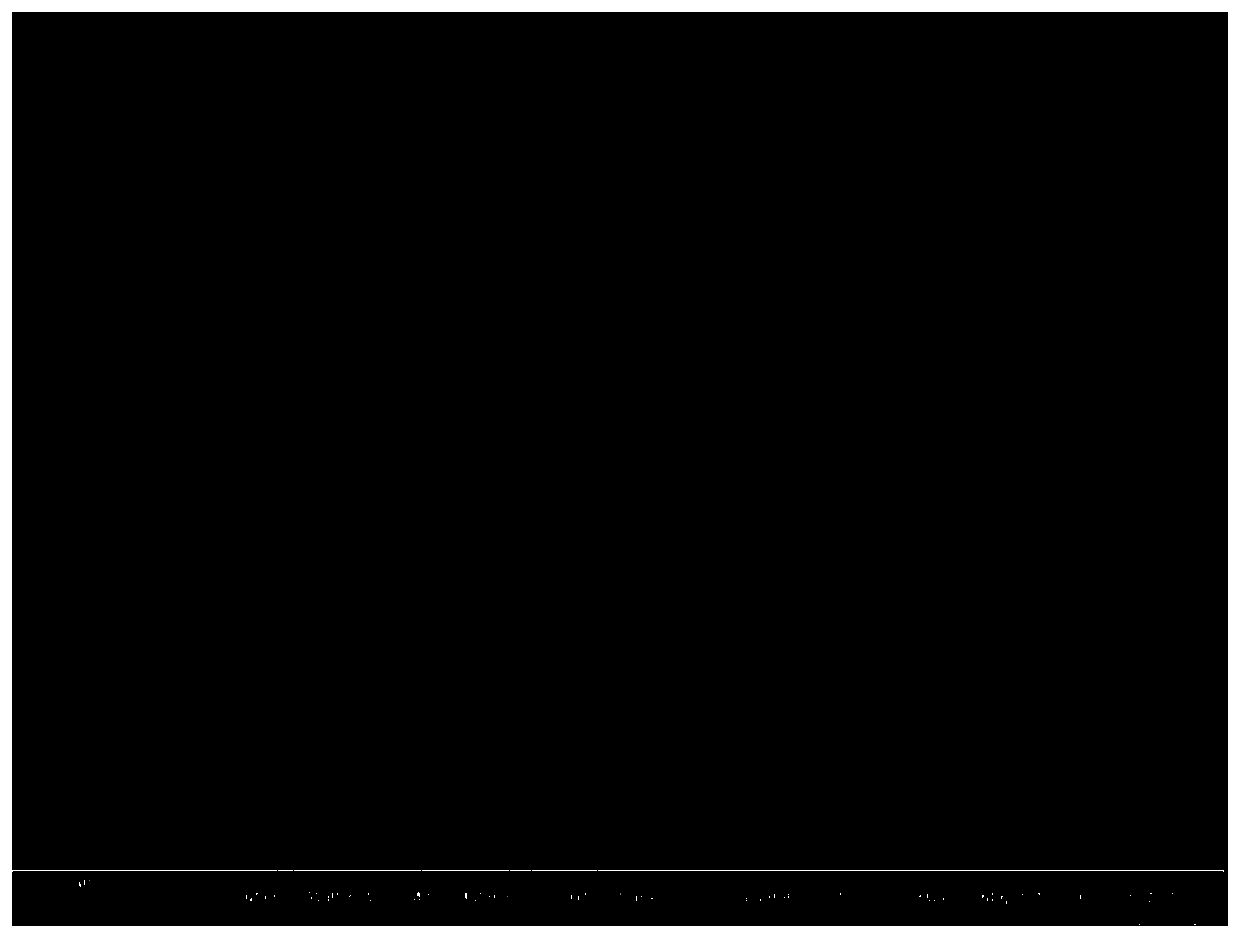A bismuth-loaded bismuth vanadate porous nanofiber and preparation method thereof
A nanofiber and porous fiber technology, applied in fiber processing, chemical instruments and methods, catalyst activation/preparation, etc., can solve the problems of degradation efficiency and solar light utilization still to be improved, quantum efficiency and photocatalytic efficiency are not high, electronic- Holes are easy to recombine and other problems, so as to improve the utilization efficiency of visible light, the preparation process is clear, and the application field of photocatalysis can be expanded.
- Summary
- Abstract
- Description
- Claims
- Application Information
AI Technical Summary
Problems solved by technology
Method used
Image
Examples
Embodiment 1
[0038] A preparation of bismuth vanadate-based porous nanofibers is carried out as follows:
[0039] (1) Weigh 1.21g of bismuth nitrate pentahydrate, 0.65g of polyvinylpyrrolidone, 0.662g of vanadyl acetylacetonate, and 2.5g of citric acid and add them to 2.5g of N,N-dimethylformamide and 2g of glacial acetic acid. , ethanol 2g was stirred and dissolved, the solution was placed in a three-necked flask, protected by a nitrogen atmosphere, stirred at 25°C for 12 hours, and the stirring speed was 800 rpm to obtain a uniformly mixed sol precursor.
[0040] (2) Take 10ml of the sol precursor liquid one by one and put it in the high-voltage electrostatic molding equipment, use the high-voltage electrostatic molding technology to synthesize, adjust the sol extrusion molding port to 0.5mm, set the high-voltage static electricity to 15KV, and the temperature to 60°C. Sol fibers were obtained; the collected fibers were placed in an oven at 70°C and dried for 40 minutes; finally, the fib...
Embodiment 2
[0043] The photocatalytic performance test of the material that embodiment 1 makes:
[0044] Prepare 50 ml of methylene blue (MB) aqueous solution with a concentration of 10 mg / L and place it in a 100 ml beaker, then add 0.1 g of the photocatalyst prepared in Example 1, and ultrasonicate for 30 s to fully dissolve the photocatalyst. Before the light experiment, the beaker was covered with a shading cloth and magnetically stirred for 30 min in the dark, so that the adsorption and desorption of the catalyst to the dye MB reached equilibrium. Then keep the room dark, remove the shading cloth, use a 500 W xenon lamp with a 420 nm filter installed at the port as a visible light source, and keep the light port at a distance of 10 cm from the beaker, so that the light spot is vertical and completely illuminates the solution in the beaker At this time, it is used as the zero point of the experiment for timing. At intervals of 20 minutes each time, 4 ml of the solution was sucked out ...
Embodiment 3
[0047] A preparation of bismuth vanadate-based porous nanofibers is carried out as follows:
[0048] (1) Preparation of precursor solution
[0049] Dissolve bismuth nitrate pentahydrate, vanadyl acetylacetonate, citric acid, and polyvinylpyrrolidone in a mixed solution of N,N-dimethylformamide, glacial acetic acid, and ethanol, place the solution in a three-necked flask, and pass it into a nitrogen atmosphere for protection. Stirring at 25°C for 6 hours at a stirring speed of 1000 rpm to obtain a uniformly mixed sol precursor; the bismuth nitrate pentahydrate: N,N-dimethylformamide: vanadyl acetylacetonate: polyvinylpyrrolidone: lemon Acid: glacial acetic acid: ethanol=10.4%: 5.7%: 5.7%: 21.7%: 17.4%: 17.4%: 21.7%, in mass percentage;
[0050] (2), preparation of bismuth vanadate porous fiber
[0051] The sol precursor solution prepared in step 1 was formed by high-voltage electrostatic molding, and the forming port was adjusted to 0.5mm to extrude the sol. The high-voltage ...
PUM
| Property | Measurement | Unit |
|---|---|---|
| size | aaaaa | aaaaa |
| diameter | aaaaa | aaaaa |
| size | aaaaa | aaaaa |
Abstract
Description
Claims
Application Information
 Login to View More
Login to View More - R&D
- Intellectual Property
- Life Sciences
- Materials
- Tech Scout
- Unparalleled Data Quality
- Higher Quality Content
- 60% Fewer Hallucinations
Browse by: Latest US Patents, China's latest patents, Technical Efficacy Thesaurus, Application Domain, Technology Topic, Popular Technical Reports.
© 2025 PatSnap. All rights reserved.Legal|Privacy policy|Modern Slavery Act Transparency Statement|Sitemap|About US| Contact US: help@patsnap.com



